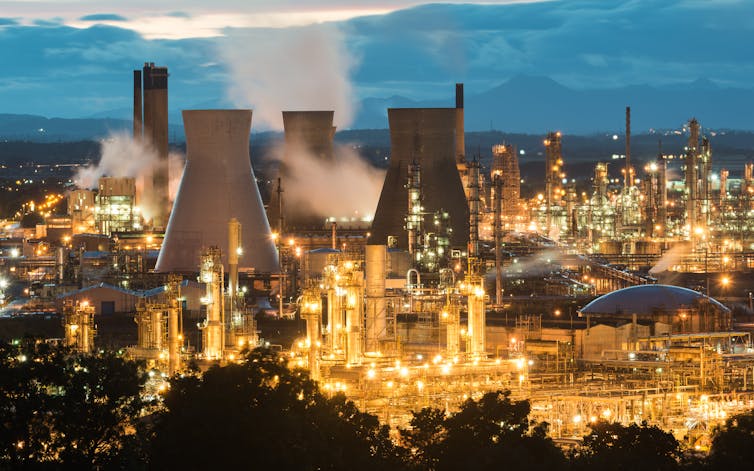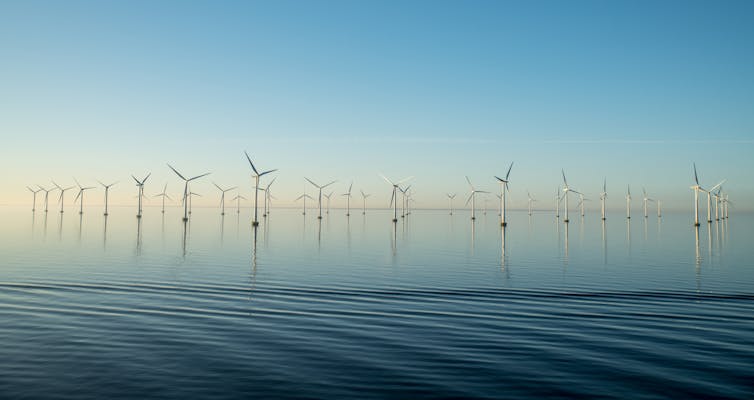This blog is part of a series on the Intergovernmental Panel on Climate Change’s recent 6th Assessment Report, with this post covering the output of Working Group III and the proposed solutions and mitigations for the climate crisis. This article also features a chat with IPCC Lead Author Dr Jo House and contributor Viola Heinrich, researchers at the University of Bristol and Cabot Institute for the Environment.
Of the three Working Groups, the third makes for the most positive reading. As the title suggests, this one is all about the mitigation of climate change and preventing the disastrous climate futures explained by Working Groups I and II. Whilst remaining focussed on the impending nature of the climate crisis, this report spells out that we have the solutions.
As discussed in the previous posts, massive behavioural changes are needed at government and societal levels. When I spoke to academics, they were positive that we were well past the point of whether climate change is real or has an impact on humanity and that economically minded leaders are starting to see the benefits of sustainable practice and the economic security it brings. Governments and states are listening and looking at policy to mitigate the crisis.
Let’s look at some of the solutions and mitigations proposed:
The quicker we act, the less economic impact
This follows on nicely from previous reports that stated the effects of warming increase with each incremental global average temperature increase. That is to say, a +1.5 degrees C future will see less devastation than a +2 degrees C or even a +1.7 degrees C rise in temperature. Such disasters (drought, extreme weather, flooding) require huge amounts of money resources to sort out. From an economic security point of view, it makes complete sense to act with great urgency. The climate crisis is already here, and therefore already having an economic impact. Action immediately will mitigate against the future potential costs of a climate disaster.
Relative to the economic impact of climate disaster in the future, the investment of reducing the impact of the crisis and securing a liveable planet is small.
The immediate reduction of fossil fuel production and limitation of greenhouse gases in the pursuit of Net Zero
As discussed before, the greatest culprit of the climate crisis is unequivocally greenhouse gas (GHG) emissions from fossil fuels. Therefore, in an ideal world, the immediate halt of fossil fuel extraction, production and consumption would be enough to prevent an overshoot +1.5 degrees C (as discussed in the first report, there is a lag between emissions and warming). Unfortunately, this is not an ideal world, so significant policy to pursue a Net-Zero will be needed.
Going further, carbon must also be removed from the atmosphere somehow, to allow the planet to return to preindustrial atmospheric carbon levels.
Carbon removal, naturally and technologically
A key aspect to the third Working Group is its arguments for carbon capture. This could be either through natural carbon removal through plants and trees, or by using carbon removal technology through direct air capture.
Carbon capture will be essential to solving the climate crisis, as carbon needs to be removed in order to return to the pre-industrial levels of atmospheric carbon. As well as this, proposed tech allows for carbon to be captured at the source of emissions. The issue is that carbon capture could lead to a dependence on the technology.
Companies, understandably, are drawn to the idea of “planting trees” to offset their emissions. It’s visible, tangible, and easy for the public to grasp. However, it’s not always the most efficient use of land and resources, and some worry that these methods will be exploited as a crutch to not reduce emissions output. While an extremely important step in mitigating climate change, some worry that there may be a resultant reliance on carbon removal over carbon emission reduction, allowing the world’s most prolific polluters to continue maintain their carbon output.
One of the most cost-effective mitigation techniques is simply the protection of existing forests and natural sites. The IPCC also stresses that decisions of protection like these must involve the input of the indigenous communities living there.
From the policy level to the personal level
It’s brilliant to be making the personal decisions to limit your own carbon impact, but individuals have limited impact on the climate system. What these reports suggest is wide reaching policy at state level to incentivise populations to make better climate conscious choices, by making things easier through improved infrastructure and methods of “demand management”, reducing the consumption of resource intensive products like meat and dairy. Diet changes at a population scale will be needed to combat the emissions of methane (another greenhouse gas) in particular.
In urban environments, investment in public transportation and cycling infrastructure would go a long way to reduce emissions. As would policy that makes retrofitting buildings to be more energy efficient and building new infrastructure with energy efficiency in mind.
For a great bit of further reading, the IPCC Special report on Climate Change and Land goes into much further detail about the impact of changing diets and consumption habits at scale.
Read the IPCC Special Report on Climate Change and Land
As previously discussed in the blog post on the WGII report, the impacts of climate change are not equal or in proportion to climate impact of the nation affected. Therefore, much of the mitigation will need to take the form of humanitarian aid, improving infrastructure for nations without the resources to do so themselves.
The IPCC reports end on a poignant note: “International cooperation is a critical enabler for achieving ambitious climate change mitigation goals”.
Insight from IPCC Lead Author Dr Jo House and contributor Viola Heinrich
 |
| Dr Jo House |
Dr Jo House is Reader in Environmental Science and Policy, Research Lead of Cabot Institute for the Environment’s Environmental Change theme and a Lead Author on the IPCC’s AR6 Working Group III report.
Viola Heinrich is a Physical Geography PhD Candidate at the University of Bristol, studying the emissions and climate mitigation potential within the land use sector in the tropics, especially the Brazilian Amazon. Viola assisted Dr House in her AR6 work, producing figures for WG III.
How did you get involved with the IPCC and WGIII?
Dr Jo House – “I have been working on IPCC reports for 20 years. I was first employed as a chapter scientist to support the chapter team for working group I, 3rd assessment report carbon cycle chapter. I was then made a lead author for the synthesis report for AR3. Since then, I have been a lead author or contributing author on all three Working Groups, as well a lead author for the Special Report on Climate Change and Land. I am also a lead author twice for the IPCC Task Force on Inventories, who provide methodological guidance to countries on how to produce their greenhouse gas inventories, for reporting to the UNFCCC, as well as accounting under the Kyoto Protocol.
 |
| Viola Heinrich |
Despite the long hours and the many thousands of comments we must respond to, I do IPCC because I care about climate change, and IPCC gets the science into the hands of people who can do something about it.”
Viola Heinrich – “I’m a PhD student working on understanding the emissions and climate mitigation potential within the land use sector in the tropics, especially the Brazilian Amazon. Jo, as my supervisor, approached me in 2019 to help produce some figures for her work on AR6 and WGIII.
It was a great learning experience seeing how these report cycles work and one bonus was that the work I produced for the IPCC reports was able used in the introduction to my PhD thesis”
What’s one key message you’d like to highlight from WGIII?
Dr Jo House – “We are nearly already too late to stay within 2 degrees, so we need to reduce fossil fuels usage drastically and rapidly to avoid even worse impacts.
Also specifically from a land perspective: The land has potential for mitigation, but it cannot do it all, planting trees is not a get out of jail free card for continuing to burn fossil fuels.”
Viola Heinrich – “This report has followed nicely on form previous cycles in that it has reaffirmed what we know about the land use component and the mitigation potential of the land use sector (20% to 30% by 2050). The big caveat of course is that the land can’t do it all and we need to be actively reducing emissions rather than relying in capture methods from trees for example.
Another interesting factor about the report is that it stresses the importance of considering the local communities in places where solutions and mitigations take place, seeking their expertise in protection, and understanding how these actions will affect them.”
——————————–
As always, we recommend taking a look at the IPCC’s full reports and report summaries for yourself if you seek to further understand the evidence and reasoning behind their headline statements.
That wraps up the blog series, I hope that it was enjoyable and informative.
———————————
This blog series was written by Cabot Communications Assistant Andy Lyford, an MScR Student studying Paleoclimates and Climate modelling on the Cabot Institute’s Master’s by Research in Global Environmental Challenges at the University of Bristol.
 |
| Andy Lyford |





























